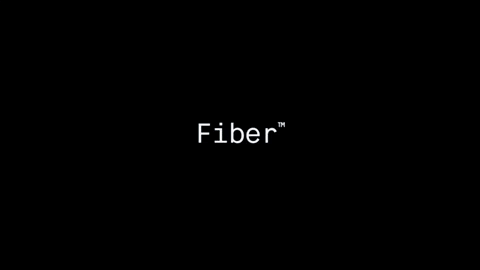Based on a new process called Micro Automated Fiber Replacement (AFP), Desktop Metal has launched its latest 3D printing technology for industrial grade continuous fibre composite materials.
It says that the new process will allow users to print parts with in a broad range of materials, that traditionally required million dollar AFP systems.

Desktop Metal Fiber seems targeted at custom or SME production, as it features a large build envelope for a ‘desktop’ 3D printer at 310 x 240 x 270 mm, along with a robotic tool changer.
On top of this, the Desktop Metal Fiber has been designed to be arranged in print farm configuration of 6 or 10 printers.
There’s a selection of composite materials at launch, including chopped carbon fibre filled Nylon (PA6) that is ESD-compliant, and a chopped fibreglass filled Nylon (PA6).
The materials library from Desktop Metal also includes chopped carbon fiber filled PEEK and PEKK filaments for added mechanical properties and chemical resistance.
The platform is available in two models through a Hardware-as-a-Service subscription for a minimum three-year take-up, with printers are scheduled to ship in Spring 2020.
Fiber HT, starting at $5,495 per year:
Continuous composites having <1 percent porosity and up to 60 per cent continuous fibre loading with advanced matrix, including PEEK and PEKK. It can make flame retardant parts to withstand high temperatures up to 250 degrees Celsius, in addition to ESD compliant parts.
Fiber LT $3,495 per year:
An affordable option for producing high strength, ESD compliant, non-marring parts using continuous fibre with <5 percent porosity with PA6 thermoplastics.
Desktop Metal states that its Fiber printers have resulted in ‘dozens of innovations’ with numerous patents pending, with the technical effort led by Dr Konstantine Fetfatsidis, VP of composite products for Desktop Metal.
Dr Fetfatsidis was previously the advanced manufacturing R&D lead for Aurora Flight Sciences, a Boeing company, and is used with working with largescale AFP technology for various development-to-production aerostructures programs.
“I am excited to bring AFP technology to the manufacturing floor for smaller, more complex parts,” said Fetfatsidis.
“This new print technology finally brings the material properties of AFP composites to small parts under 20 pounds, which would typically require expensive tooling, extensive manual labor, multiple consumables, and multi-step, long process cycles.”
Fiber 3D printers are scheduled to ship in Spring 2020.






